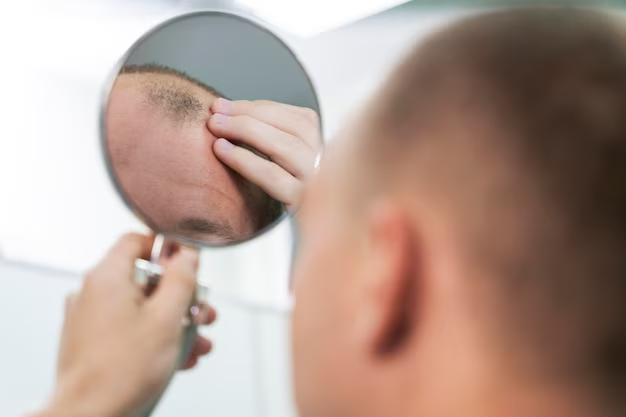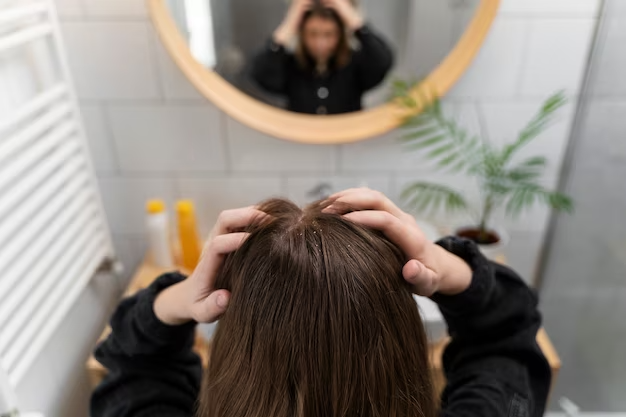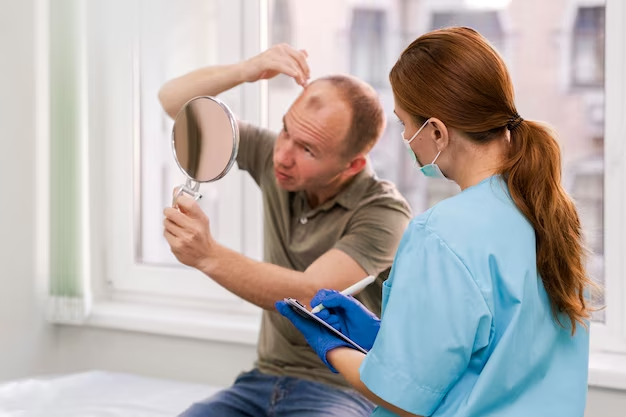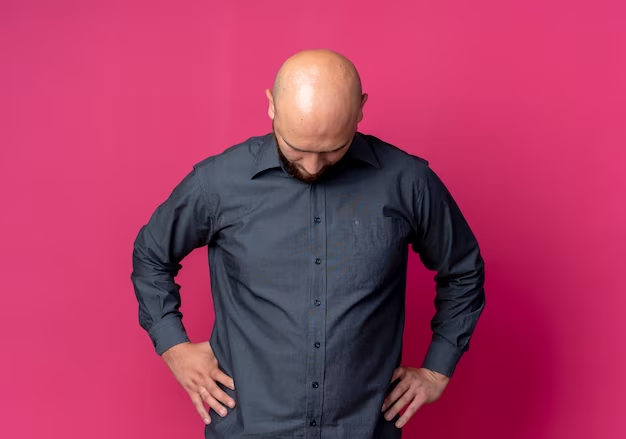Male Pattern Baldness (MPB) is a prevalent condition affecting men worldwide, characterized by a distinctive pattern of hair loss. Understanding the significance and emotional impact of Male Pattern Baldness is crucial for those navigating this common yet often challenging journey. With advancements in medical science and various treatment options available, individuals experiencing MPB can explore personalized solutions that cater to both their physical and emotional well-being.
Table of contents
- Overview of Male Pattern Baldness (MPB)
- Significance and Impact on Individuals
- Understanding Male Pattern Baldness
- Causes of Male Pattern Baldness
- Identifying Male Pattern Baldness
- Treatments for Male Pattern Baldness
- Preventive Measures and Lifestyle Changes
- Preventive Measures and Lifestyle Changes
- Psychological Impact and Coping Strategies
- Seeking Professional Advice
- Future Advances in Male Pattern Baldness Research
- Conclusion
- Frequently Asked Questions
Overview of Male Pattern Baldness (MPB)
Male Pattern Baldness, also known as androgenetic alopecia, is a hereditary condition that causes hair loss in a specific pattern, typically starting at the temples and crown. It is the most common cause of hair loss in men, with a recognizable pattern that progresses over time.
Male Pattern Baldness is linked to genetic factors and the influence of androgens, particularly dihydrotestosterone (DHT). Understanding this condition involves recognizing the impact of hormonal shifts on hair follicles, leading to their miniaturization. While MPB is a natural and common occurrence, numerous treatments and interventions are available to address its progression and help individuals regain confidence in their appearance.
Significance and Impact on Individuals
The impact of Male Pattern Baldness extends beyond the physical aspect, influencing self-esteem and confidence. As hair is often linked to identity and attractiveness, experiencing Male Pattern Baldness can lead to emotional challenges. Understanding this impact is essential for individuals and those around them to provide empathetic support.
Recognizing the significance of Male Pattern Baldness as more than a cosmetic concern fosters a compassionate approach to its management. Open conversations, awareness, and accessible solutions contribute to creating a supportive environment where individuals can navigate this aspect of their journey with resilience and confidence.
Understanding Male Pattern Baldness
Male Pattern Baldness (MPB) is a distinctive and often hereditary form of hair loss that affects a significant portion of the male population. Delving into its definition, characteristics, and genetic underpinnings provides a comprehensive understanding of this prevalent condition.
Definition and Characteristics
Male Pattern Baldness is a specific type of hair loss characterized by a predictable pattern of receding hairlines and thinning at the crown. Typically, it begins with a receding hairline at the temples, forming an “M” shape, and progresses to partial or complete baldness at the crown. The gradual nature of this process sets Male Pattern Baldness apart from other forms of hair loss.
This distinctive pattern is often associated with genetic factors and hormonal influences, specifically the impact of dihydrotestosterone (DHT) on hair follicles. Recognizing these defining characteristics is crucial for accurate diagnosis and the development of personalized strategies to manage and address Male Pattern Baldness effectively.
Genetic Factors and Hereditary Links
Genetic factors play a pivotal role in Male Pattern Baldness, making it a hereditary condition. The inheritance of specific genes from both parents contributes to an increased susceptibility to MPB. The primary culprit is dihydrotestosterone (DHT), a derivative of testosterone, which binds to hair follicles and triggers the thinning and eventual loss of hair.
Understanding the hereditary links of Male Pattern Baldness is essential, as individuals with a family history of MPB may have a higher likelihood of experiencing it themselves. Genetic counseling and early intervention strategies can assist in addressing and managing the impact of hereditary factors on the progression of Male Pattern Baldness.
Causes of Male Pattern Baldness
Male Pattern Baldness (MPB) is influenced by a combination of hormonal, genetic, and environmental factors. Understanding the intricate causes provides valuable insights into why this condition occurs and how it progresses.

Hormonal Factors and Dihydrotestosterone (DHT)
One of the primary causes of Male Pattern Baldness is the influence of hormones, particularly dihydrotestosterone (DHT). This hormone, derived from testosterone, binds to hair follicles, leading to their shrinkage and eventual cessation of hair growth. The sensitivity of hair follicles to DHT is a key factor in the development of MPB.
Role of Genetics in Predisposition
Genetics plays a significant role in determining an individual’s susceptibility to Male Pattern Baldness. If there is a family history of MPB, the likelihood of experiencing it increases. Specific genetic markers inherited from both parents contribute to the predisposition, highlighting the hereditary nature of this condition.
Other Contributing Factors such as Age and Lifestyle
While hormones and genetics are primary contributors, age and lifestyle factors also play a role in the onset and progression of Male Pattern Baldness. As individuals age, the likelihood of experiencing MPB increases. Additionally, factors such as poor nutrition, smoking, and high-stress levels can exacerbate hair loss in genetically predisposed individuals.
Identifying Male Pattern Baldness
Recognizing Male Pattern Baldness (MPB) in its early stages empowers individuals to take proactive steps toward management and treatment. Understanding the signs and utilizing tools like the Norwood scale aids in identifying and addressing MPB effectively.
Recognizing Early Signs and Symptoms
Early detection of Male Pattern Baldness involves paying attention to subtle changes in hair density and the overall appearance of the hairline. Key signs include a receding hairline at the temples, thinning at the crown, and the formation of the characteristic “M” shape. Increased hair shedding during daily activities like showering or combing may also indicate the onset of MPB.
Stages of Progression – Norwood Scale
The Norwood scale is a valuable tool for gauging the progression of Male Pattern Baldness. This scale categorizes MPB into various stages, from minimal to advanced, helping individuals and healthcare professionals assess the extent of hair loss. Understanding the Norwood scale allows for accurate communication about the severity of MPB and aids in determining suitable treatment options.
Treatments for Male Pattern Baldness
Male Pattern Baldness (MPB) is a common concern, but several effective treatments can address its progression and restore hair growth. Exploring pharmacological interventions and surgical options provides individuals with diverse avenues for managing MPB.
Pharmacological Interventions
Pharmacological treatments for Male Pattern Baldness aim to address hormonal factors and stimulate hair growth. Two prominent medications have demonstrated efficacy in managing MPB:
Finasteride (Propecia)
Finasteride is an oral medication that inhibits the conversion of testosterone to dihydrotestosterone (DHT), the hormone responsible for shrinking hair follicles in MPB. By reducing DHT levels, Finasteride helps maintain the size of existing follicles and promotes hair regrowth. It is a long-term treatment requiring consistency for sustained results.
Minoxidil (Rogaine)
Minoxidil is a topical solution applied directly to the scalp. It stimulates blood flow to the hair follicles, prolonging the growth phase of hair and promoting thicker strands. Minoxidil is available over the counter and is suitable for both men and women. Regular application is essential for optimal results.
Surgical Options
For individuals seeking more immediate and permanent solutions, surgical interventions provide viable options to address Male Pattern Baldness:
Hair Transplant Procedures
Hair transplantation involves harvesting hair follicles from areas of the scalp with healthy growth (donor sites) and transplanting them to areas with thinning or no hair (recipient sites). This procedure allows for the redistribution of hair, providing a natural and lasting solution to MPB. Techniques like Follicular Unit Transplantation (FUT) and Follicular Unit Extraction (FUE) are commonly employed.
Scalp Reduction
Scalp reduction is a surgical procedure that involves removing sections of the scalp with no hair growth and stretching the adjacent areas with hair to cover the removed portions. While less common today due to the prevalence of hair transplant procedures, scalp reduction can still be a suitable option for certain cases.
Preventive Measures and Lifestyle Changes
Taking proactive steps through preventive measures and lifestyle changes is crucial for managing and potentially slowing down Male Pattern Baldness (MPB). Incorporating specific nutritional considerations, adopting effective haircare practices, and making lifestyle adjustments contribute to a holistic approach to hair health.
Nutritional Considerations for Hair Health
- Balanced Diet for Hair Nutrients: Ensuring a well-rounded diet that includes essential vitamins and minerals is paramount for overall hair health. Foods rich in biotin, vitamins A and E, iron, and omega-3 fatty acids contribute to the strength and vitality of hair.
- Supplements for Hair Support: In some cases, dietary supplements can complement nutritional intake. Consultation with a healthcare professional can guide the use of supplements such as biotin or iron, depending on individual needs.
Haircare Practices to Minimize Hair Loss
- Gentle Hair Handling: Avoid aggressive brushing or combing, especially when hair is wet. Use a wide-toothed comb and be gentle to prevent unnecessary stress on hair strands.
- Avoiding Tight Hairstyles: Styles that pull on the hair, such as tight ponytails or braids, can contribute to hair breakage and traction alopecia. Opt for looser hairstyles to minimize stress on the hair.
- Mild Hair Products: Choose mild shampoos and conditioners that suit your hair type. Harsh chemicals can strip the scalp of natural oils and contribute to dryness and breakage.

Lifestyle Adjustments for Prevention
- Stress Management: Chronic stress can exacerbate hair loss. Incorporate stress-reducing activities into your routine, such as meditation, yoga, or deep breathing exercises.
- Regular Exercise: Physical activity promotes overall well-being, including good circulation to the scalp. Aim for regular exercise to enhance blood flow to hair follicles.
- Adequate Sleep: Quality sleep is essential for overall health, including hair health. Ensure you get enough restorative sleep each night to support your body’s natural processes, including hair growth.
Preventive Measures and Lifestyle Changes
Male Pattern Baldness (MPB) may be inevitable for some, but adopting preventive measures and lifestyle changes can significantly impact its progression. By focusing on nutritional considerations, implementing haircare practices to minimize hair loss, and making essential lifestyle adjustments, individuals can proactively manage their hair health.
Nutritional Considerations for Hair Health
- Balanced Diet for Hair Nutrients: Maintaining a diet rich in essential nutrients is crucial for promoting healthy hair growth. Incorporate foods high in biotin, such as eggs and nuts, and vitamin-rich options like leafy greens and citrus fruits to ensure a well-rounded intake.
- Supplements for Hair Support: In some cases, dietary supplements can complement nutritional needs. Consult with a healthcare professional to determine if supplements like biotin or iron are suitable for your requirements.
Haircare Practices to Minimize Hair Loss
- Gentle Hair Handling: Treat your hair with care, especially when wet. Use a wide-toothed comb to detangle and avoid unnecessary stress on hair strands. Wet hair is more susceptible to breakage, so handle it gently.
- Avoiding Tight Hairstyles: Opt for loose hairstyles that don’t pull on the hair shafts. Tight ponytails or braids can lead to hair breakage and even contribute to traction alopecia over time.
- Mild Hair Products: Choose hair care products with mild formulations. Avoid harsh chemicals that can strip the scalp of natural oils, leading to dryness and increased hair fragility.
Lifestyle Adjustments for Prevention
- Stress Management: Chronic stress is a known contributor to hair loss. Integrate stress-reducing practices into your routine, such as meditation, yoga, or deep breathing exercises, to promote overall well-being.
- Regular Exercise: Physical activity enhances blood circulation, including to the scalp. Engage in regular exercise to support healthy blood flow to hair follicles, contributing to optimal hair health.
- Adequate Sleep: Quality sleep is essential for the body’s natural regeneration processes, including hair growth. Prioritize a consistent sleep schedule to ensure your body has ample time for restoration.
Psychological Impact and Coping Strategies
Male Pattern Baldness (MPB) extends beyond the physical realm, often taking a toll on individuals emotionally. Understanding the emotional effects and exploring effective coping mechanisms and support options are vital components of managing the psychological impact of MPB.
Emotional Effects of Male Pattern Baldness
- Impact on Self-Esteem: MPB can significantly impact self-esteem, as societal beauty standards often associate a full head of hair with youth and attractiveness. Individuals may experience a decline in confidence as they navigate changes in their appearance.
- Social and Personal Perception: The societal perception of hair as a symbol of vitality and health can influence how individuals perceive themselves and how they believe others see them. Coping with societal expectations and potential judgment can be emotionally challenging.
- Psychological Stress: The emotional effects of MPB can lead to psychological stress, further exacerbating hair loss. The stress-hair loss cycle can create a challenging loop that affects both mental well-being and physical appearance.
Coping Mechanisms and Support Options
- Positive Self-Talk: Cultivating positive self-talk can counteract negative thoughts and emotions associated with MPB. Affirmations and focusing on one’s strengths beyond physical appearance contribute to a healthier mindset.
- Seeking Professional Support: Psychologists and therapists can provide valuable support in navigating the emotional impact of MPB. Professional counseling offers a safe space to explore feelings, develop coping strategies, and build resilience.
- Connecting with Supportive Communities: Joining support groups or online communities where individuals share their experiences with MPB fosters a sense of belonging. Connecting with others facing similar challenges provides mutual understanding and encouragement.
- Exploring Hair Styling Options: Experimenting with different hairstyles or embracing a new look can be empowering. Finding a style that suits individual preferences and boosts confidence can positively impact emotional well-being.
- Understanding the Temporary Nature of Emotions: Recognizing that emotions fluctuate and that negative feelings about MPB can be temporary is crucial. Accepting the natural emotional responses and working toward a positive mindset is an ongoing process.
Seeking Professional Advice
When dealing with Male Pattern Baldness (MPB), seeking professional advice is a crucial step in understanding the condition, exploring effective treatments, and receiving personalized guidance. Consulting with a dermatologist or trichologist ensures informed decisions and tailored approaches to manage MPB.

Importance of Consulting a Dermatologist or Trichologist
- Expert Diagnosis: Dermatologists and trichologists specialize in the health of the skin, hair, and scalp. Their expertise allows for accurate diagnosis of the type and extent of hair loss, including Male Pattern Baldness.
- Identifying Underlying Issues: Professionals can identify any underlying health issues contributing to hair loss. This comprehensive assessment helps determine whether MPB is the sole factor or if other health conditions are influencing hair health.
- Treatment Recommendations: Dermatologists and trichologists can provide a range of treatment options based on the specific needs of the individual. From topical solutions to oral medications, they tailor recommendations to address the unique characteristics of hair loss.
Customized Treatment Plans and Recommendations
- Personalized Approaches: Professionals create customized treatment plans that consider factors such as age, overall health, and the stage of Male Pattern Baldness. This ensures that the chosen treatments align with individual needs and preferences.
- Monitoring Progress: Dermatologists and trichologists monitor the progress of the chosen treatments and adjust plans as needed. Regular check-ups allow for assessments of efficacy and the identification of any side effects or adjustments required.
- Combination Therapies: In some cases, a combination of treatments may be recommended to optimize results. This holistic approach may include pharmacological interventions, lifestyle adjustments, and in certain instances, surgical options.
Future Advances in Male Pattern Baldness Research
The landscape of Male Pattern Baldness (MPB) research is dynamic, with ongoing studies and potential breakthroughs offering hope for innovative treatments. Exploring current research endeavors and the exciting possibilities on the horizon provides a glimpse into the future of managing MPB.
Current Research and Ongoing Studies
- Genetic Studies: Ongoing genetic research aims to uncover more about the specific genes influencing MPB. Understanding the genetic basis of the condition may lead to targeted therapies and more personalized treatment approaches.
- Stem Cell Research: Investigating the role of stem cells in hair follicle regeneration is a focal point of current research. Stem cell therapies could potentially stimulate the regrowth of hair, presenting a novel avenue for MPB treatment.
- Advanced Diagnostic Tools: Research is focused on developing more advanced diagnostic tools to precisely assess the progression of MPB. Enhanced diagnostic capabilities would enable earlier intervention and more effective management.
Potential Breakthroughs and Emerging Treatments
- CRISPR Technology: CRISPR gene-editing technology holds promise in addressing the genetic factors contributing to MPB. While in the early stages, CRISPR may offer future possibilities for targeted gene therapies to prevent or reverse hair loss.
- Stem Cell Therapies: Advancements in stem cell research may lead to innovative therapies that harness the regenerative potential of stem cells to stimulate hair follicle growth. Stem cell treatments could revolutionize the landscape of MPB management.
- Precision Medicine: The future of MPB treatment may involve precision medicine, tailoring interventions based on an individual’s genetic makeup and specific characteristics of hair loss. This personalized approach aims to optimize treatment outcomes.
Conclusion
In conclusion, the journey of addressing Male Pattern Baldness (MPB) is multi-faceted, encompassing not only the physical aspects of hair loss but also the emotional and psychological dimensions. From understanding the causes and identifying early signs to exploring diverse treatment options and embracing preventive measures, individuals have a range of tools to manage MPB effectively. The significance of seeking professional advice, both from dermatologists and trichologists and staying abreast of ongoing research underscores the commitment to comprehensive care. As research advances and potential breakthroughs emerge, the future of MPB management holds exciting possibilities, offering hope for more tailored and innovative treatments. Ultimately, a holistic approach that integrates lifestyle adjustments, psychological support, and personalized interventions empowers individuals to navigate the complexities of Male Pattern Baldness with resilience and confidence.
Frequently Asked Questions
While Male Pattern Baldness is largely hereditary, adopting a healthy lifestyle, managing stress, and seeking early professional advice can help slow down its progression and potentially minimize its impact.
Some over-the-counter products like minoxidil may help stimulate hair growth in certain individuals, but their effectiveness varies. Consulting with a healthcare professional for personalized advice is crucial for determining the most suitable approach.
Hair transplantation can provide a lasting solution by redistributing healthy hair follicles, but it doesn’t prevent further hair loss. It’s essential to consider it as part of a comprehensive approach and follow professional guidance for optimal results.

I am John, a dedicated Content Writer with a passion for enhancing brands, particularly in the Supplement industry. Currently, I’m part of the dynamic team at Plantanium. My mission is to connect People with the exceptional Supplement Products provided by Plantanium, ensuring that individuals achieve their best health.



